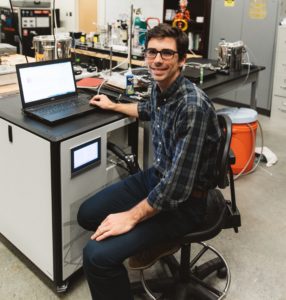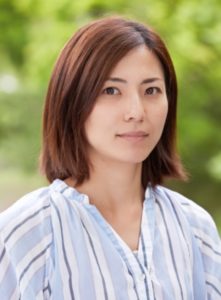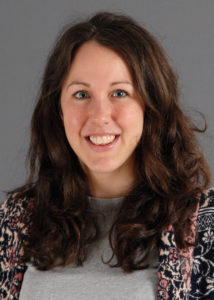
Dr. Elliott Gall is an assistant professor at Portland State University in the department of Mechanical and Materials Engineering. Dr. Gall’s research and teaching seeks to improve the sustainability of the built environment through an understanding of the intersection of indoor air quality, urban air pollution, and human exposure to air pollutants. Research areas include: i) laboratory and field studies of air pollutant transport and transformation, ii) air pollution exposure assessment through modeling and personal exposure studies, and iii) evaluation of building technology and design with respect to indoor environmental quality. Active research includes application of chemical ionization – time of flight – mass spectrometry to the study of indoor environments; a current focus is measurement of source, sink, and transformation processes from traffic related air pollution, wildfire emissions, and wood stove heating emissions. Dr. Gall is also studying the fate and transport of indoor ozone and other oxidants; he was acknowledged with the 2018 Yaglou Award from the International Society for Indoor Air Quality and Climate for his work on indoor ozone chemistry. Finally, an ongoing research area investigates and critically evaluates the impact of vegetation, e.g., green roofs and houseplants, on indoor and urban air quality.
Previously, Dr. Gall received a B.S.E in Environmental Engineering from the University of Florida, an M.S. degree in Environmental & Water Resources Engineering from the University of Texas, and his Ph.D. in Civil Engineering from the University of Texas. From 2013 to 2016, he was a postdoctoral researcher in Singapore as part of a joint research program between UC Berkeley, NUS, and NTU, where he studied indoor air quality of buildings in tropical climates. He has authored or co-authored nearly thirty peer-reviewed journal publications. His work at Portland State has been featured in local and national media, including The Atlantic, the Willamette Week, Oregon Public Broadcasting, and he has been interviewed on the nationally syndicated Top of Mind radio program. More information can be found at his lab group website, www.pdx.edu/green-building or on twitter @etgall.
Read Elliott Gall’s Emerging Investigator article “Primary emissions, ozone reactivity, and byproduct emissions from building insulation materials” and find out more about him in the interview below:
Your recent Emerging Investigator Series paper focuses on primary emissions, ozone reactivity, and byproduct emissions from building insulation materials. How has your research evolved from your first article to this most recent article?
The major evolution from some of my earlier work is the analytical methods my lab uses in this study. We designed these experiments to be similar in scope to prior work testing building materials because we’re integrating a proton transfer reaction – time of flight – mass spectrometer (PTR-TOF-MS) into the effort. A major focus of my start-up at Portland State has been learning chemical ionization mass spec with an Ionicon PTR-TOF-MS, with which we have also been working with multiple ionizing reagents. This research was the first major, research-grade study that we conducted with the instrument. Prior to that, the lab team and I spent a great deal of time learning, reading, and running preliminary tests. It’s been a fascinating, and at times, frustrating, journey learning time of flight-mass spectrometry. With this effort completed, and more broadly our increasing capability with TOF-MS, I’m excited about where we can continue contributing to the field.
What aspect of your work are you most excited about at the moment?
Our work with time of flight-mass spectrometry, and the general trend towards real-time measurements in the field, is exciting. The ability to see information on the gas and particle species in air in real-time has been fascinating and, I think, will really enable important new approaches both in field and lab studies. I’m hopeful that we can use the dynamic information from our PTR-TOF-MS to both better understand physics and chemistry of indoor spaces and to develop automated, high-throughput methods that will let us scale out test matrices to include many more samples and with better replication. I’m also excited about bridging indoor and outdoor air quality issues. There’s been a general increase in attention to indoor air quality in the past decade or so, which is leading to exciting new developments in the field.
In your opinion, what are the most important questions to be asked/answered in this field of research?
I believe establishing better understanding of health effects associated with exposures to indoor sources air pollution would drive better research questions as well as enable better actions to be formulated and recommended or incorporated into building code. Understanding indoor air pollutant levels and dynamics is one part of this, but it will require more collaboration with health scientists and funding for larger-scale studies than have been conducted to date.
I also think better understanding of indoor air pollutant cycling, over short and long time frames, will improve understanding of air pollution exposures and also other routes of exposures like dermal uptake. There are high surface area to volume ratios indoors. There exist many knowledge gaps in understanding how these surfaces interact with indoor air and may act as reservoirs for air pollutants, or as transformation pathways, especially for their role in indoor reactions of nitrogen containing compounds and impacts on indoor radical species.
What do you find most challenging about your research?
Indoor air studies (and air quality studies in general) are characterized by a very complex matrix of gas and particle-phase pollutants. Since I started at PSU, a majority of our research effort has been focused on developing lab capabilities to measure things (e.g. organics via the PTR-TOF-MS) in that matrix. We’ve set up the lab to a point where we can measure a range of key parameters of interest: particle size distributions, some approaches for particle composition, and organic and inorganics in the gas-phase. Especially given my position in a Mechanical Engineering department, there’s often student interest and excitement for development of automation, instrumentation, and other tools. The field as a whole has obviously made really important advancements in our understanding of air quality due to improvements in instrumentation. Collecting data is central to what we do, but I’d like to ensure we keep a balance of learning and incorporating methods for data generation and collection while not losing sight of designing studies for generalizable, lasting, and impactful knowledge. Part of that is accepting that you will likely never have all the information you want. I try to keep a sense of humor about the somewhat famous quote “All science is either physics or stamp collecting”, and use it as little reminder to try and think about what kind of information a particular effort is going to yield.
In which upcoming conferences or events may our readers meet you?
I’ll be at AAAR in October 2019 in Portland, OR and I plan to attend Indoor Air in Seoul in 2020.
How do you spend your spare time?
My wife and I were thrilled to be able to move to the Pacific Northwest for my work at Portland State. We spend our free time hiking and camping in all the fantastic mountains, coasts, and deserts that the area has to offer. The mountain biking opportunities in the area are world-class, and coming from Florida and Texas, I’ve been able to improve a lot as a mountain biker. While summer is a great time to get research done, the perfect weather (outside of our recent spate of wildfires) make it way too alluring to get outside. I’ve been kicking around an indoor air quality in camping tents study in my head as an excuse to bridge work and fun.
Which profession would you choose if you were not a scientist?
I can’t get enough time on a mountain bike, but I’ve also always been pretty cautious person, so I don’t think anyone would pay to see such unexciting riding – but maybe a guide or trainer? More likely, if I wasn’t a scientist I would probably pursue advocacy related to the environment and conservation – maybe cycling-based urban planning. So many win-wins (including for air quality!) if we could redesign our cities around bikes instead of cars.
Can you share one piece of career-related advice or wisdom with other early career scientists?
It’s an obvious one, but being active and intentional about time management. What you choose to spend your time on impacts every aspect of your career, and inevitably also much of your personal life. There’s no one-size-fits all answer to this, but in my opinion, it’s important to give time management consideration on a daily basis regarding tasks at hand, but also to dedicate time to for bigger picture thinking on a regular basis. It took me some time to appreciate just how long lead time initiating new research can be, and so what you do day to day now can impact what you will be working on years from now, who you are collaborating with, etc. Giving this thought regularly has helped me focus and be more effective, and also with that all too difficult task of declining opportunities, to ensure I’m working on things that I think will be productive and meaningful.
 The 6th European Conference on Environmental Applications of Advanced Oxidation Processes will take place in Portorož, Slovenia from 26th – 28th June 2019. The conference will bring together scientists, engineers and other environmental professionals to present their findings and discuss future trends and directions concerning various environmental applications of advanced oxidation processes (AOPs). The contributions will focus on the scientific and technological advances of AOPs for the remediation of water, air and soil contaminated with various recalcitrant compounds, either alone or in combination with other processes.
The 6th European Conference on Environmental Applications of Advanced Oxidation Processes will take place in Portorož, Slovenia from 26th – 28th June 2019. The conference will bring together scientists, engineers and other environmental professionals to present their findings and discuss future trends and directions concerning various environmental applications of advanced oxidation processes (AOPs). The contributions will focus on the scientific and technological advances of AOPs for the remediation of water, air and soil contaminated with various recalcitrant compounds, either alone or in combination with other processes.












